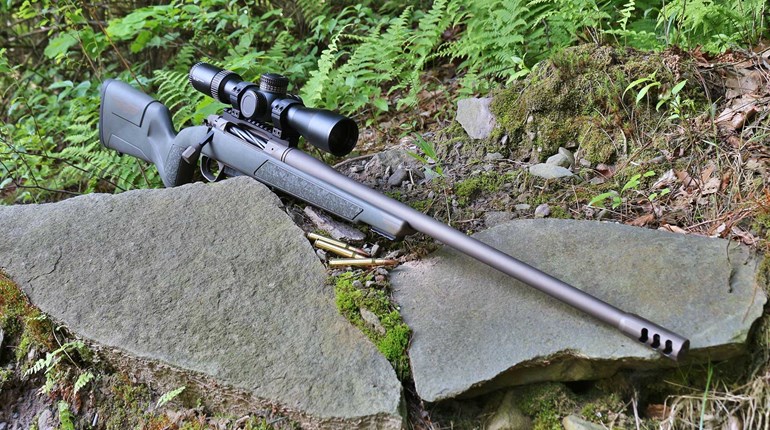
The technology boom of the last two decades has allowed people share thoughts and ideas around the globe. From Facebook to Skype to Instagram and FaceTime, we’re more connected now than ever. But social scientists witnessed another trend as electronics took over our lives; we were more connected electronically, yet we became more disconnected from the outdoors and the natural world. The question, then, became how to draw more people, particularly young people, to nature. My vote: hunting.
Looking back through history, hunting is not just a tradition but a way of life—and a means of survival. From Paleolithic hunters with stone tools until the modern day, hunting has been integral to human existence. But in a world that is growing more and more distant from the wilderness, do we still need to hunt? I believe so. Not strictly for the procurement of healthy, natural food...but also for the future of our wild game. Despite what anti-hunting groups say, hunting protects wildlife and preserves valuable habitat that is quickly being lost to urbanization. If you care about wildlife, you should learn the facts about hunting. Here are four key points about hunting that everyone needs to know.
1. Regulated Hunting Is Conservation:
Unregulated hunting—driven largely by market hunters of the late 1800’s and early 1900’s who killed strictly for profit—wiped out wildlife populations. But that’s very different than regulated hunting, which preserves and protects game. Need proof? Wildfowl populations, nearly depleted at the turn of the 20th century, are at a 59-year high. Whitetail deer numbers hovered around 500,000 in 1900, and today there are an estimated 20 million deer in the United States. There were 30,000 wild turkeys in the U.S. in 1900, and today there are 7 million birds. Hunters and conservation groups like Ducks Unlimited, Whitetails Unlimited, the Rocky Mountain Elk Foundation, the National Wild Turkey Federation and others have helped fund these dramatic population rebounds, and it’s interesting to note that these increases occurred under the North American Model of conservation, with hunting as a fundamental element of conservation efforts.
2. Hunters Pay For Conservation:
The Federal Aid in Wildlife Restoration Act, better known as the Pittman-Robertson Act, was enacted in 1937 and placed an excise tax on sporting goods that would generate revenue to help protect wildlife. And who were the primary supporters of this tax? You guessed it, hunters. Hunters who offered to pay a little bit more to ensure that there was a fund dedicated to the preservation of wildlife in the United States. Since 1937, the Pittman-Robertson Act has generated more than 7 billion dollars for conservation, but that’s only a fraction of the money hunters put toward wildlife protection. According to the United States Fish and Wildlife Service, hunters spent 33.7 billion dollars in 2011 alone—money which helped support rural economies and wildlife. Conservation groups have also paid to set aside valuable land for conservation in the United States. Ducks Unlimited has preserved over 13 million acres of habitat that is vital to waterfowl survival, particularly nesting and brooding areas. Can anti-hunting groups begin to show that level of commitment to preserving habitat? No.
3. Regulated Hunting Isn’t The Problem:
While protesters were waving their fists in anger over the legal, government-sanctioned black rhino hunt in Namibia two years ago, I was following a very different story that was unfolding in that country: the wholesale slaughter of rhinos for horns to be sold in Asia. There were dozens of incidents of poaching that year, but strangely that didn’t draw the ire that the legal rhino hunt for one 30+-year-old bull garnered. The end result? The rhino that was supposed to be taken on that hunt ended up killing a younger bull (as the authorities and conservation groups feared might happen), and Namibia lost $600,000 that could be used in their fight against poachers.
Yes, wildlife populations face major threats, but most of those are a result of an expanding human population, loss of habitat and illegal hunting. In many areas of the world, unregulated mining of metals (particularly coltan, or columbite-tantalite, a critical part in the manufacturing of electronics like cell phones, tablets and laptops) are a serious threat to habitat and wildlife, resulting in the deaths of far more African animals than sport hunting. But chances are that anti-hunting groups won’t give up their electronics in spite of that fact.
4. Hunting Provides Healthy Protein:
Modern industrial agriculture has streamlined meat production, but there are drawbacks. When you buy packaged meat in a store, you don’t know whether or not the animal was treated with hormones or antibiotics, its condition at the time of death or how the meat was handled. As a hunter, I don’t worry about the origin of my food because I harvested it myself. Wild game is an abundant and valuable resource, a fantastic form of lean protein. I know where and how my meat was killed, witnessed it being processed (or, if someone else does it, I get to choose who handles the meat), and moved it directly into my freezer. In addition, hunters help feed struggling families as well through meat donations; hunters for the hungry has donated 2.8 million pounds of high-quality wild game meat to shelters across the country, provided a valuable resource for those in need.





































